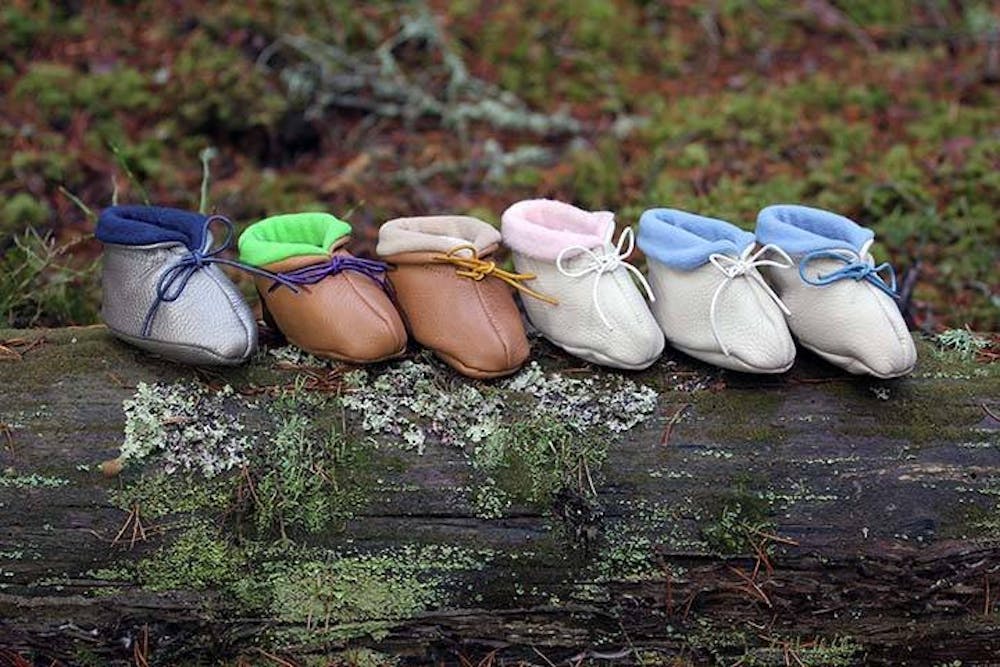IU art history professor Michelle Facos transforms moose leather into baby booties for her business, Moose Booties.
In 2015, Facos decided to start the company to sell her baby booties made from moose leather. She said the booties are entirely safe for infants if they put it in their mouths.
“You could eat it and you won’t get sick,” Facos said.
Facos’ booties are made from moose leather, and the shoe strings are made from cow leather. A standard pair of Baby Booties cost $110, and sheepskins cost upwards of $450.
Facos lines the interior of the booties with fleece, which she said are all sustainably sourced.
The shoes are all Oeko-Tex Standard 100 certified, which means the textiles used in making the products do not contain toxic ingredients.
The Moose Booties are washed thoroughly and tested at laboratories in Europe.
Toxic chemicals and dyes are typically used during the leather tanning process. However, most Moose Booties are made with vegetable dyes.
Facos said the Oeko-Tex Standard 100 is the nontoxic standard for leather, including cow, pig, goat and moose leathers.
But because the process is more expensive and takes more work, Facos said most other larger companies do not use it.
"Very few baby shoes that are made of leather have gone through that process," Facos said.
Facos said most American baby shoe companies she has talked to do not test their leather.
The moose leather used for Facos’ products comes from Scandinavia.
“In Scandinavia, people are very careful about what their babies are exposed to,” Facos said.
The leather Facos uses is tanned and prepared in Sweden, but the only place moose leather is commonly found today is Finland.
Facos, a Swedish and American dual citizen, learned her trade in northern Sweden, where she spent time with the Sami people, who are known for reindeer herding.
This is where Facos learned about the art of moose tanning and the sustainability of purchasing products made from moose leather, rather than products made from cows.
Facos also said every year, Scandinavia calculates a moose census to determine whether or not it is harmful or helpful for the nation to proceed with moose hunting.
She said hunters in Scandinavia herd and kill about 100,000 moose a year.
“Hunting is way less cruel than starvation,” Facos said.
Moose often starve to death because their winter season is eight months long, making it difficult to find food while many animals are in hibernation. Also, moose do not have any natural predators.
Facos said hunters used to throw out moose skin because the leather is extremely stretchy, making it difficult to use for clothing. However, in the 1990s, scientists figured out a way to tan the leather so it would not stretch.
"Making the moose booties is an important part of this sort of ethological chain, because instead of throwing out the skin, which is what they used to do, it’s now productive and useful," Facos said.




